Description:
Science has fully entered a new mode of operation. E-science, defined as a combination of science, informatics, computer science, cyberinfrastructure and information technology is changing the way all of these disciplines do both their individual and collaborative work.
Scientists are facing global problems of a magnitude, complexity and interdisciplinary nature that progress is limited by a trained and agile workforce.
At present, there is a lack formal training in the key cognitive and skill areas that would enable graduates to become key participants in e-science collaborations. The purpose is to teach methodologies, and provide application experience and skill-sets in an inter-disciplinary forum to students and interested participants.
As semantic technologies have been gaining momentum in various e-Science areas (for example, W3C's new interest group for semantic web health care and life science), it is important to offer semantic-based methodologies, tools, middleware to facilitate scientific knowledge modeling, logical-based hypothesis checking, semantic data integration and application composition, integrated knowledge discovery and data analyzing for different e-Science applications.
Partially influenced by the Artificial Intelligence community, the Semantic Web researchers have largely focused on formal aspects of semantic representation languages or general-purpose semantic application development, with inadequate consideration of requirements from specific science areas. On the other hand, general science researchers are growing ever more dependent on the web, but they have no coherent agenda for exploring the emerging trends on the semantic web technologies. It urgently requires the development of a multi-disciplinary field to foster the growth and development of e-Science applications based on the semantic technologies and related knowledge-based approaches.
To fill the gaps that are currently present in the integrative nature of informatics for the translation of science into requirements for the underlying and largely syntactic e-infrastructure.
Scientists are facing global problems of a magnitude, complexity and interdisciplinary nature that progress is limited by a trained and agile workforce.
At present, there is a lack formal training in the key cognitive and skill areas that would enable graduates to become key participants in e-science collaborations. The purpose is to teach methodologies, and provide application experience and skill-sets in an inter-disciplinary forum to students and interested participants.
As semantic technologies have been gaining momentum in various e-Science areas (for example, W3C's new interest group for semantic web health care and life science), it is important to offer semantic-based methodologies, tools, middleware to facilitate scientific knowledge modeling, logical-based hypothesis checking, semantic data integration and application composition, integrated knowledge discovery and data analyzing for different e-Science applications.
Partially influenced by the Artificial Intelligence community, the Semantic Web researchers have largely focused on formal aspects of semantic representation languages or general-purpose semantic application development, with inadequate consideration of requirements from specific science areas. On the other hand, general science researchers are growing ever more dependent on the web, but they have no coherent agenda for exploring the emerging trends on the semantic web technologies. It urgently requires the development of a multi-disciplinary field to foster the growth and development of e-Science applications based on the semantic technologies and related knowledge-based approaches.
To fill the gaps that are currently present in the integrative nature of informatics for the translation of science into requirements for the underlying and largely syntactic e-infrastructure.
To fill the gaps that are currently present in the integrative nature of informatics for the translation of science into requirements for the underlying and largely syntactic e-infrastructure.
Goal:
To fill the gaps that are currently present in the integrative nature of informatics for the translation of science into requirements for the underlying and largely syntactic e-infrastructure.
Learning Objective:
Learning Objective:
- Ontology Development, Merging and Validation
- Semantic Language and Tool Use and Evaluation
- Use Case Development and Elaboration
- Semantic eScience Implementation and Evaluation via Use Cases
- Semantic Application Development and Demonstration
- Group Project and Team Development, Use Case Implementation and Evaluation
- TBC
Assessment Criteria:
- Via written assignments with specific percentage of grade allocation provided with each assignment
- Via oral presentations with specific percentage of grade allocation provided
- Via group presentations
- Via participation in class (not to exceed 10% of total)
- Late submission policy: first time with valid reason – no penalty, otherwise 20% of score deducted each late day
Academic Integrity:
Student-teacher relationships are built on trust. For example, students must trust that teachers have made appropriate decisions about the structure and content of the courses they teach, and teachers must trust that the assignments that students turn in are their own. Acts, which violate this trust, undermine the educational process. The Rensselaer Handbook of Student Rights and Responsibilities defines various forms of Academic Dishonesty and you should make yourself familiar with these. In this class, all assignments that are turned in for a grade must represent the student’s own work. In cases where help was received, or teamwork was allowed, a notation on the assignment should indicate your collaboration. Submission of any assignment that is in violation of this policy will result in a penalty.
If found in violation of the academic dishonesty policy, students may be subject to two types of penalties. The instructor administers an academic (grade) penalty, and the student may also enter the Institute judicial process and be subject to such additional sanctions as: warning, probation, suspension, expulsion, and alternative actions as defined in the current Handbook of Student Rights and Responsibilities. If you have any question concerning this policy before submitting an assignment, please ask for clarification.
If found in violation of the academic dishonesty policy, students may be subject to two types of penalties. The instructor administers an academic (grade) penalty, and the student may also enter the Institute judicial process and be subject to such additional sanctions as: warning, probation, suspension, expulsion, and alternative actions as defined in the current Handbook of Student Rights and Responsibilities. If you have any question concerning this policy before submitting an assignment, please ask for clarification.
Course: Semantic eScience
Date: to
